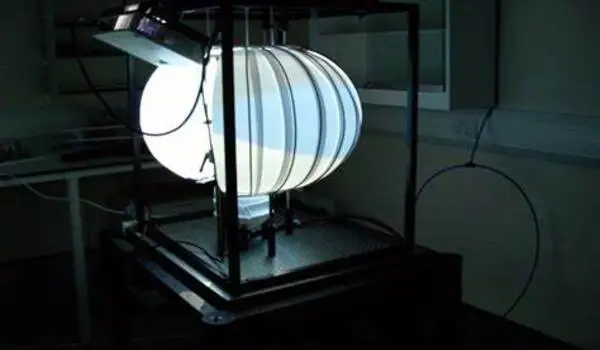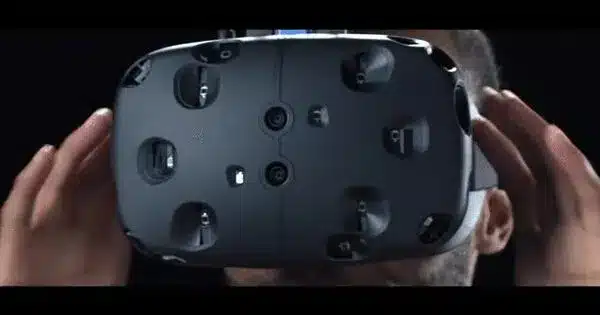New miniature virtual reality (VR) goggles offer more immersive experiences for laboratory mice. Researchers can study the neural circuitry that underpins behavior more accurately and precisely by more faithfully simulating natural environments. In comparison to current cutting-edge systems, which simply surround mice with computer or projection screens, the new goggles represent a significant step forward.
Researchers at Northwestern University have created new virtual reality (VR) goggles for mice. Apart from being adorable, these miniature goggles provide more immersive experiences for laboratory mice. Researchers can study the neural circuitry that underpins behavior more accurately and precisely by more faithfully simulating natural environments.
In comparison to current cutting-edge systems, which simply surround mice with computer or projection screens, the new goggles represent a significant step forward. Mice can still see the lab environment peeking out from behind the screens in current systems, and the screens’ flat nature cannot convey three-dimensional (3D) depth. Another disadvantage has been the inability of researchers to easily mount screens above mice’s heads to simulate overhead threats such as looming birds of prey.
VR basically reproduces real environments. We’ve had a lot of success with this VR system, but it’s possible the animals aren’t as immersed as they would be in a real environment. It takes a lot of training just to get the mice to pay attention to the screens and ignore the lab around them.
Daniel Dombeck
All of these issues are avoided by the new VR goggles. Furthermore, as VR becomes more popular, the goggles may help researchers gain new insights into how the human brain adapts and reacts to repeated VR exposure – an area that is currently poorly understood.
The research will be published in the journal Neuron. It marks the first time researchers have used a VR system to simulate an overhead threat.
“We’ve been using VR systems for mice for the past 15 years,” said Northwestern’s Daniel Dombeck, the study’s senior author. “Until now, labs have surrounded an animal with large computer or projection screens.” This is equivalent to watching television in your living room for humans. You can still see your couch and walls. There are cues all around you indicating that you are not in the scene. Consider donning VR goggles, such as the Oculus Rift, that cover your entire field of vision. Nothing but the projected scene is visible, and a different scene is projected into each eye to create depth information. That has been lacking for mice.”
Dombeck is a neurobiology professor at Northwestern’s Weinberg College of Arts and Sciences. His laboratory is a leader in developing VR-based systems and high-resolution, laser-based imaging systems for animal research.

The value of VR
Although researchers can observe animals in the wild, imaging patterns of real-time brain activity while animals interact with their surroundings is extremely difficult. To address this issue, researchers have incorporated virtual reality (VR) into laboratory settings. In these experimental setups, an animal uses a treadmill to navigate scenes projected onto surrounding screens, such as a virtual maze.
Neurobiologists can view and map the brain as the mouse traverses a virtual space by keeping the mouse on the treadmill rather than allowing it to run through a natural environment or physical maze. Finally, this aids researchers in understanding the broad principles of how activated neural circuits encode information during various behaviors.
“VR basically reproduces real environments,” Dombeck said. “We’ve had a lot of success with this VR system, but it’s possible the animals aren’t as immersed as they would be in a real environment. It takes a lot of training just to get the mice to pay attention to the screens and ignore the lab around them.”
Introducing iMRSIV
With recent advances in hardware miniaturization, Dombeck and his team wondered if they could develop VR goggles to more faithfully replicate a real environment. Using custom-designed lenses and miniature organic light-emitting diode (OLED) displays, they created compact goggles.
Called Miniature Rodent Stereo Illumination VR (iMRSIV), the system comprises two lenses and two screens — one for each side of the head to separately illuminate each eye for 3D vision. This provides each eye with a 180-degree field of view that fully immerses the mouse and excludes the surrounding environment.
Unlike VR goggles for a human, the iMRSIV (pronounced “immersive”) system does not wrap around the mouse’s head. Instead, the goggles are attached to the experimental setup and closely perch directly in front of the mouse’s face. Because the mouse runs in place on a treadmill, the goggles still cover the mouse’s field of view.
“We designed and built a custom holder for the goggles,” said John Issa, a postdoctoral fellow in Dombeck’s laboratory and study co-first author. “The whole optical display – the screens and the lenses — go all the way around the mouse.”
Reduced training times
Dombeck and his colleagues discovered that the brains of goggle-wearing mice were activated in very similar ways to those of freely moving animals by mapping their brains. In side-by-side comparisons, the researchers discovered that mice wearing goggles engaged with the scene much faster than mice using traditional VR systems.
“We went through the same kind of training paradigms that we have done in the past, but mice with the goggles learned more quickly,” said Dombeck. “They were able to complete the task after the first session.” They knew where to run and where to look for rewards. We believe they may not require as much training because they can interact with the environment in a more natural manner.”
Simulating overhead threats for the first time
The researchers then used the goggles to simulate an overhead threat, which was previously impossible with current systems. Because imaging technology hardware already sits above the mouse, there is no room to mount a computer screen. The sky above a mouse, on the other hand, is a place where animals frequently look for vital – sometimes life-or-death – information.
“The top of a mouse’s field of view is very sensitive to detect predators from above, like a bird,” said Dom Pinke, a research specialist in Dombeck’s lab and co-first author. “It’s an imprinted behavior, not a learned behavior.” It’s hardwired into the mouse’s brain.”
The researchers projected a dark, expanding disk into the top of the goggles – and the top of the mice’s fields of view – to simulate a looming threat. In experiments, mice either ran faster or froze when they noticed the disk. Both behaviors are common responses to threats from above. Researchers were able to study these reactions in depth by recording neural activity.
“In the future, we’d like to look at situations where the mouse isn’t prey but is the predator,” she said. “For example, we could observe brain activity while it chases a fly.” That activity requires a lot of depth perception and distance estimation. Those are the kinds of things we can start capturing.”














